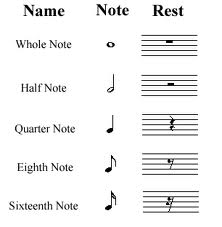It's easy to learn how to copyright a song. And it's important to understand why you should do it and what kind of rights you'll get when you go through the process.
Disclaimer: I'm not a lawyer. Don't take anything I say here as legal advice. I've collected this information as carefully as I could from professional resources but if you need legal advice, consult a lawyer.
What's Copyright?
When you copyright a song, nobody checks if the song is original. All a copyright does is prove the date of the registration.
You don't have to copyright a song for it to be "yours". Once you create something, you own the copyright. There's nothing you have to do. However, if you ever need to prove that it's your work, it's much easier to do if you have registered it at The Copyright Office. And you can do the registration any time, even for songs that you wrote 20 years ago. The effective date of registration is the date when the Copyright Office receives all the documents they need from you.
The song you register must be in a tangible form, of course. For example, you can submit it on paper (lyrics and sheet music) or on a "phonorecord" (a tape or a CD).
Although most songwriters know how to copyright a song, they do it only after the demo is done. Anyone stealing your song is quite unlikely. It rarely happens. Mostly the rich and famous are sometimes accused of copyright infringement but 99% of the time they are innocent and they can prove it.
What Are Your Rights?
If you'd like to learn how to copyright songs, you need to understand what rights you'll have once you do it:
✓ You can reproduce the copyrighted song (CD's, tapes and sheet music)
✓ You can create derivative works from the song (samples, compilations, etc.)
✓ Distribute it to the public, transfer ownership, rent, lease or lend it.
✓ You have the right to perform the song publicly (TV, radio, etc.), and collect royalties through one of the performing rights organizations, such as ASCAP, BMI or SESAC.
✓ You can display the copyrighted song publicly (karaoke, etc.)
What Can't You Copyright?
If you copyright a song, it doesn't mean that you own every little part of it for good. There are several things that you cannot copyright, no matter what:
▪ Ideas or concepts
▪ Titles or lines, phrases from your lyrics
▪ Chord progressions
▪ Rhythm patterns
How Long Does Copyright Last?
How long copyright lasts depends on when you created, published and registered the song. The laws on the 'how long does copyright last' page are valid in the United States.
Copyright Registration
Would you like to know how to copyright a song online? It's easy and I strongly recommend that you do it if you can because it's cheaper and simpler. The online registration costs $35 now. The paper version is $50. To find out how to copyright your song on the internet and what other ways are available, visit the 'Copyright on the Internet' page.
Cheaper Copyright Registration
If you'd like to save money, you can register your songs as a "collection" and give it all one title (and pay the fee of $35 or $50 for all of them together). You might also include the real titles of the songs but if someone would like to look up the copyright information of your song (to get in touch with you), they will find it only under the name of the "collection" and not the individual songs.
Poor Man's Copyright
Since registering copyright isn't cheap at all, some resourceful person/people invented the "poor man's copyright". It means that you send your song to yourself by registered mail. And when you get it, you don't open the envelope. This way the postal stamp will certify when the work was created. It's not such a good idea to do though. You might lose the envelope. Or maybe it just won't be a good enough evidence in an infringement trial. So this is not how to copyright a song properly.
How to Copyright a Song and Let the World Know About It
To make sure that it's clear to everyone that you own the copyright to a certain song, you should put a copyright notice on the sheet music or on any tangible product.
1. Put the © symbol somewhere, or write "copyright" or "copr.".
2. Include the year of the first publication of your song.
3. Write down the name of the owner(s) of the copyright.
Example: © 2010 John Smith
If your song is not in a tangible form but it's a CD or tape, you should do the same as in the previous case but instead of a © symbol, use a ℗ symbol, which is short for 'phonorecord'.
To find out more about how to copyright a song and how copyright works in this modern, digital era, I recommend that you read Allen Bargfrede and Cecily Mak's book, Music Law in the Digital Age . It's not only about regular copyright matters but also new issues, like delivering music on the internet, YouTube, MySpace, etc.
. It's not only about regular copyright matters but also new issues, like delivering music on the internet, YouTube, MySpace, etc.
How to Register Copyright on the Internet
How Long Does Copyright Last?

















